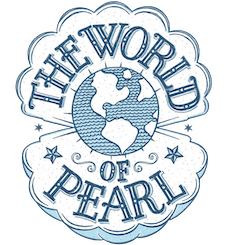Welcome to Pearl Grading 101! Have you ever asked a jeweler about pearls? If so, you may have discovered that many jewelers are uninformed about pearls. And those who do know about pearls have staff members who don’t necessarily understand things like the difference between salt water and freshwater pearls. They certainly couldn’t explain why one necklace had a $10,000 price tag. So, do not go blindly into your next pearl purchase! Here is Pearl Grading 101 so you can educate yourself before you go shopping for pearls. With proper knowledge, you can decide whether that pearl necklace is worth the price or not. Here is a basic lesson in how to select and grade pearls.
Pearls are unique to most jewels in that they have no grading system which is accepted world-wide. So, if you are buying AAA pearls, rest assured that the jeweler or pearl company has added that description. One jeweler’s AAA description may not compare to another one’s A description. Do you know why the best quality diamond you can buy is rated D? Before the diamond grading system was created, the market was saturated with A, B and C grades. Unfortunately, a universal pearl grading system has not been created.
To grade pearls, one must look at 7 different quality factors. These factors must be observed separate of one another before an overall grade can be determined.
Let’s get to work! First, look at the Size of the pearl. This is quality factor number 1. Sizes of cultured pearls are usually written in millimeters. The bigger pearls are typically more expensive than smaller pearls because this usually suggests that the pearl took a longer time to form.
The second quality factor is shape. Roll the pearls in front of your eyes. The most expensive pearls are the closest to round and they are described as Round. Pearls can also be described as Near Round, Oval, Button, Drop, Semi-Baroque or Baroque. These are the seven standard shapes of pearls.
Color is a quality factor than serves to describe a pearl. Look closely at the pearl. There is a basic body color and then an overtone to most pearls .The most common pearls are neutral or near-neutral in body color. Because pearls are made of layers, the layers create the overtones. Common overtones are rose or green but other colors are possible. Look closely at your pearls and see how you would describe them. This quality factor is more of a source of preference than anything else. Sometimes, however, the rare colors are seen as more precious than the common colors.
How much shine do the pearls have? Luster is the forth quality factor and possibly the most important one. Luster is critically important to the value of pearls. Pearls retain their look longer with a high luster. A pearl with excellent luster is sharp and distinct. With good luster, a pearl is slightly hazy and with fair luster, the pearl has a weak shine.
Look closely at the surface of the pearl to detect blemishes. More blemishes translate to a lower value. This is surface quality, the fifth factor, and it is an important method of determining the grade of a pearl. Surface quality ranges from Clean (which means almost blemish free) to lightly, moderately or heavily blemished. Remember, if there are no blemishes at all, it is difficult to know that the pearls are real. Completely spotless pearls are rare indeed!
Nacre is the calcium carbonate that a mollusk uses to produce a pearl. Nacre is important because many salt-water pearls are bead nucleated. This means that a round piece of shell is put inside an oyster and the oyster creates the pearl by coating the bead with layers of nacre. This nacre may only be a ½ mm thick. Check the pearls and make sure the bead is not visible beneath the layer of nacre. Pearls can also look chalky if the nacre quality is poor. Note that freshwater cultured pearls usually do not have a bead inside of them. This is also why freshwater cultured pearls are heavier.
The 7th and final quality factor is how well the pearls match one another in a piece of jewelry. Take the six quality factors and judge their consistency in the one piece of jewelry. Pearl matching is usually graded as Excellent, Good and Fair. Matching is another big value factor as it reflects the amount of labor involved creating the piece of pearl jewelry.
Take this knowledge with you the next time you go shopping for pearls. This information will enable you to select the best pearls at the right price. You might even be able to teach others a thing or two!
I am a modern day treasure hunter who travels the world for gorgeous pearls and amazing adventures. I own a pearl jewelry and jewelry repair business, ThePearlGirls.com, with a cute retail store in Athens, GA. I also have a Pearl Travel business and travel blog at TheWorldofPearl.com.



